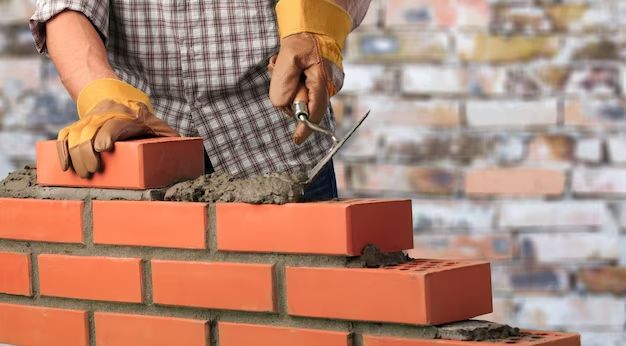Fixing a loose brick is a common DIY home repair task that any homeowner can tackle. While it may seem daunting, it is actually quite straightforward once you understand the basic steps. In this article, we will walk through everything you need to know to successfully re-secure a loose brick.
Page Contents
What causes bricks to become loose?
There are a few common reasons bricks can work themselves loose over time:
- Settling or shifting of the foundation – As foundations naturally settle, it can cause mortar joints to crack and bricks to dislodge.
- Freezing and thawing cycles – In cold climates, the freeze/thaw cycles in winter can slowly degrade mortar.
- Poor initial installation – Bricks that were not properly installed initially may not have enough mortar securing them.
- Age and weathering – Older mortar will naturally weaken and deteriorate over decades of exposure to the elements.
How can you identify a loose brick?
Start by visually inspecting the bricks and mortar joints on your home. Signs that a brick is loose or becoming unbonded include:
- Crumbling or missing mortar
- Cracks radiating from the mortar joints
- Bricks that jiggle, shift or move when touched
- Gaps between bricks
- Sections of wall that seem to bulge outwards
It is best to address any loose bricks as soon as possible before the issue worsens. A loose brick that detaches completely can fall and cause injury or property damage.
What tools and materials do you need?
Here are the basic tools and materials required:
- Hammer and chisel – To chip away old mortar
- Masonry trowel – For applying new mortar
- Mortar mix – Pre-mixed is the easiest option
- Drop cloths – To protect surrounding areas from mess
- Grout bag – For mortar application in tight spaces
- Board – A piece of wood to tap bricks back into place
- Safety gear – Gloves, eye protection, etc.
You may also need access to a ladder or scaffolding depending on the location of the bricks.
Step-by-step instructions
Follow these steps to successfully re-adhere a loose brick:
- Prepare the work area – Lay down drop cloths and clean away any dirt or debris around the bricks.
- Remove old mortar – Use the hammer and chisel to carefully chip away any cracked or crumbling existing mortar surrounding the loose brick.
- Clean the brick surface – Once the old mortar is removed, scrub the brick with a stiff brush to remove any remaining material or loose particles.
- Wet the surface – Lightly dampen the brick surface as well as the adjacent bricks. This helps the fresh mortar adhere.
- Apply new mortar – Use a mortar bag or trowel to apply a 1/2″ layer of fresh mortar onto the surface and sides of the brick. Ensure full coverage.
- Reset the brick – Using the board, tap the brick back into its original position, pressing firmly to embed it into the fresh mortar.
- Tool the mortar joints – Once the brick is reset, use the trowel to neaten the mortar joints and give a uniform, finished look.
- Clean up – Carefully sponge and wipe away any excess mortar before it dries using a damp cloth or sponge.
Allow the mortar to fully cure for 1-2 days before applying any other finishing.
Tips and precautions
- Work slowly and carefully when chiseling out old mortar to avoid damaging bricks.
- Only re-adhere as many bricks as you can comfortable set in one session before the mortar begins to harden.
- Match the new mortar as closely as possible to the existing mortar color and texture.
- Store unused bagged mortar properly sealed to prevent it from hardening prematurely.
- Consider repointing the mortar joints of adjacent bricks to reinforce the area.
- Take safety precautions when working from a ladder or at height.
When to call a professional
While fixing a single loose brick is generally a DIY project, there are some cases where you may need to call in a professional mason for assistance:
- If there are many loose bricks over a large area, signaling a more serious underlying issue
- For repair work needed high up that requires scaffolding
- If you break or crack bricks while attempting the repair
- For older homes with more fragile brickwork
- If the source of the problem is unknown or persists despite repairs
A professional can properly diagnose the root cause and advise the right solution when dealing with widespread brick bonding issues.
Conclusion
Resetting a loose brick is a straightforward DIY project that any homeowner can tackle in a weekend. With some basic tools, materials, and these step-by-step instructions, you can successfully re-adhere and stabilize a problem brick. Pay close attention to fully cleaning surfaces and pressing bricks firmly into fresh mortar as you reset them. Call in a pro mason if you are unsure about the repairs or are dealing with a more extensive issue beyond just a single loose brick. With proper technique and care, you can easily fix minor brick problems and prevent them from becoming bigger issues down the road.
